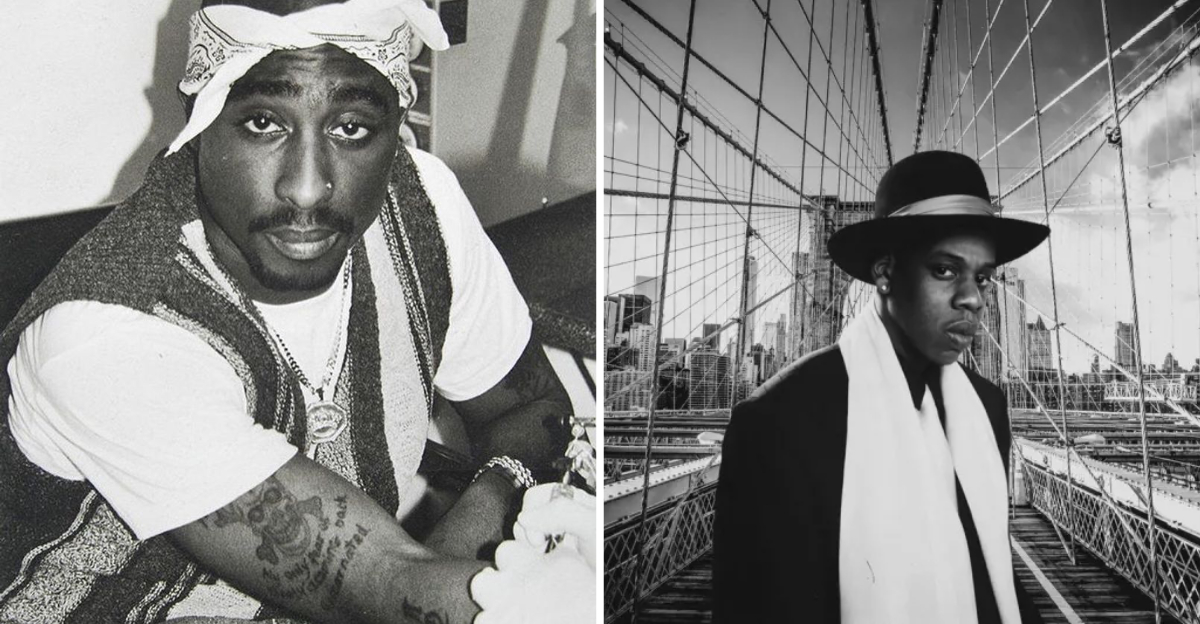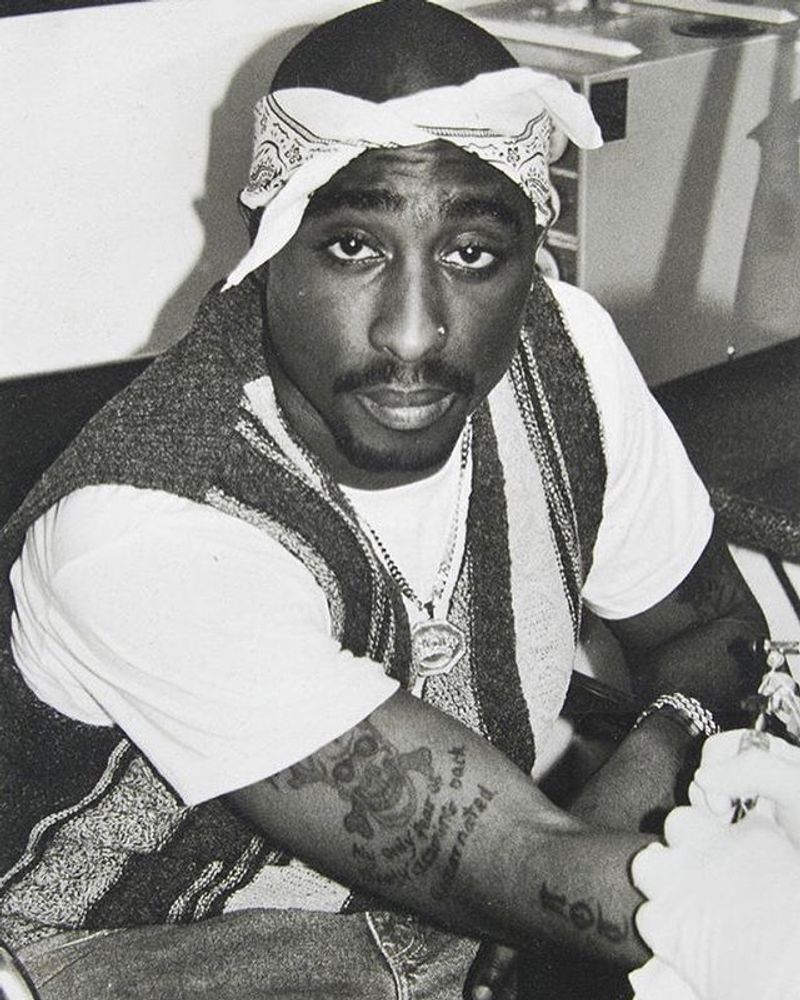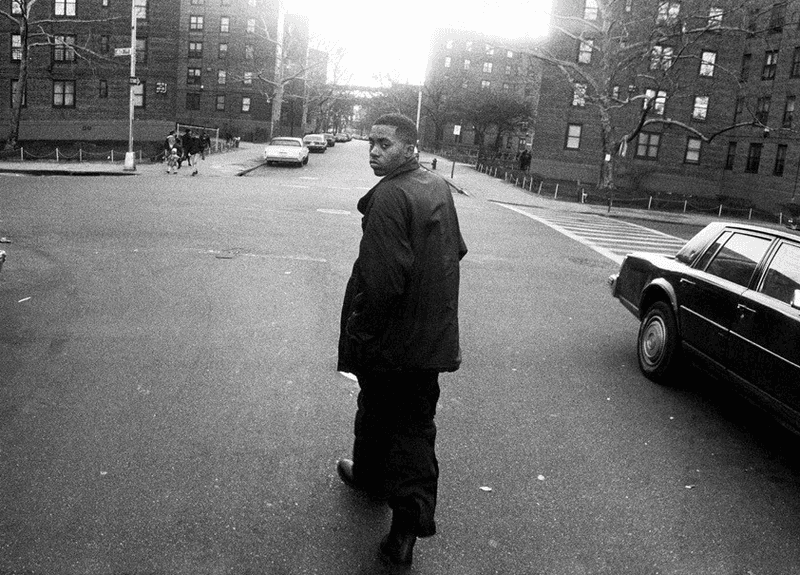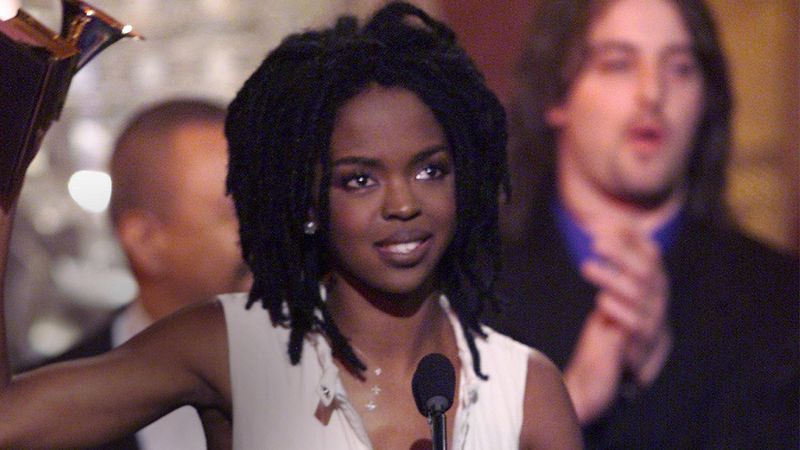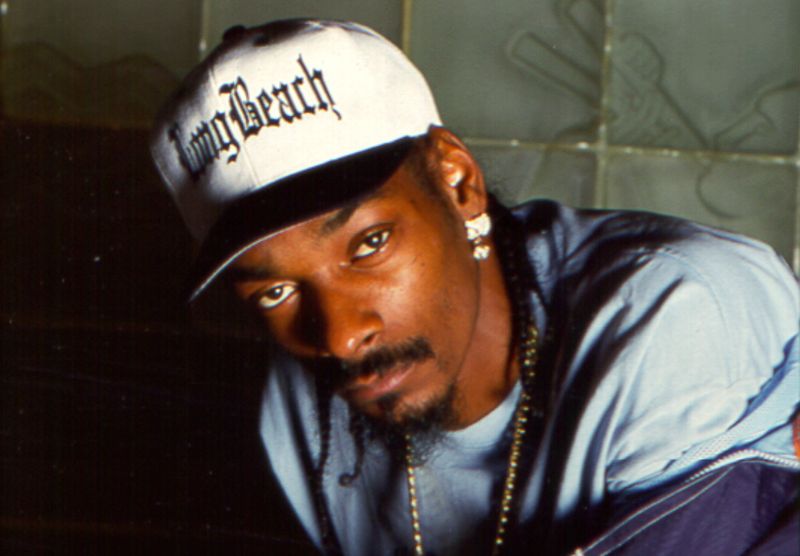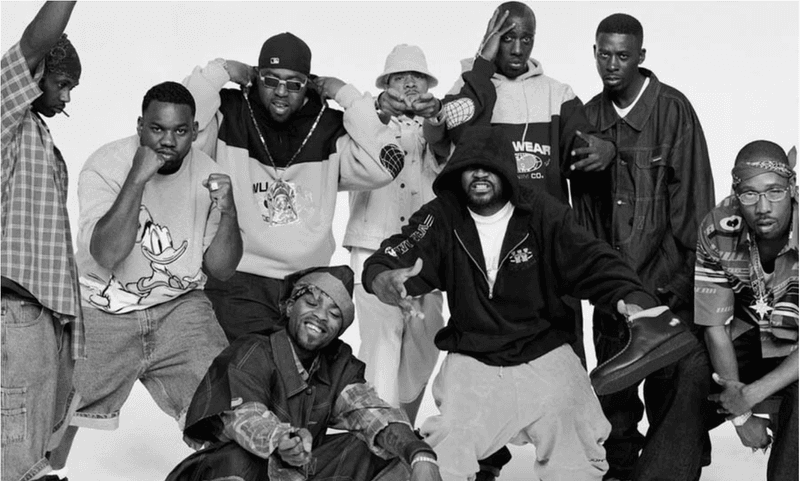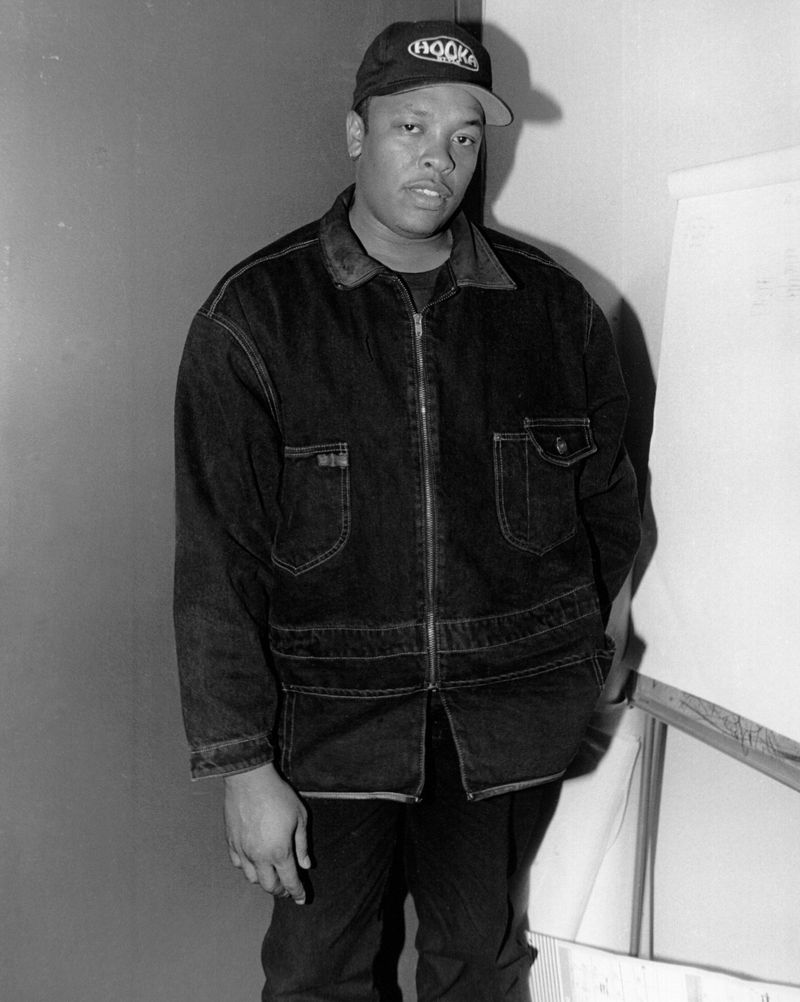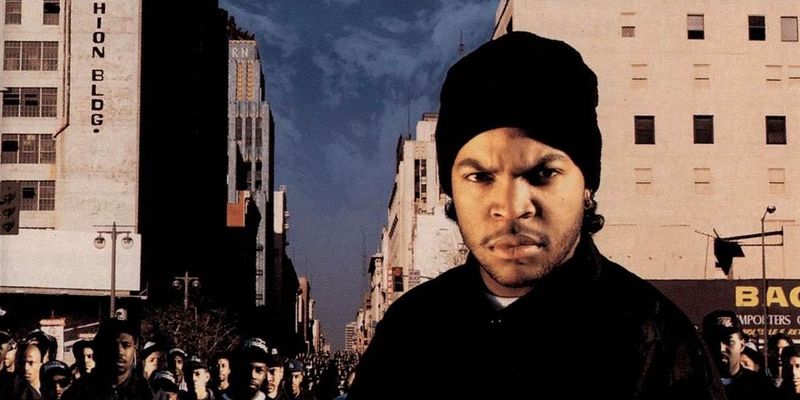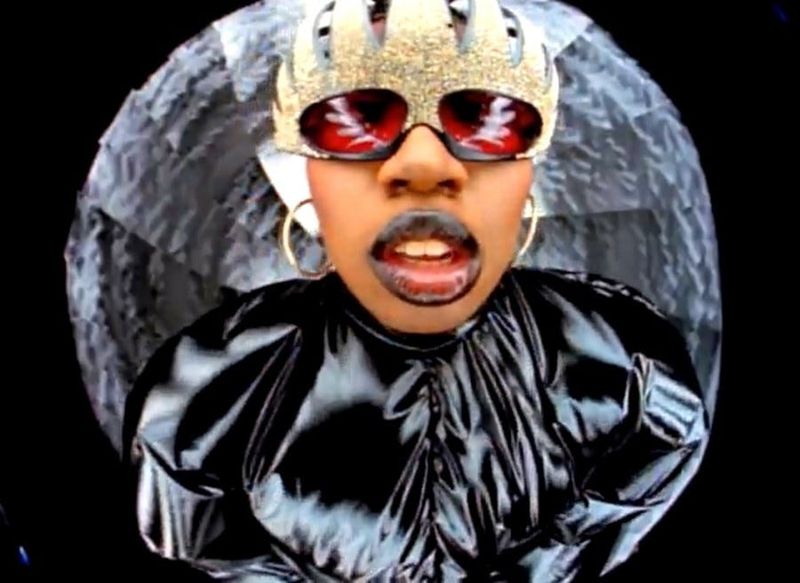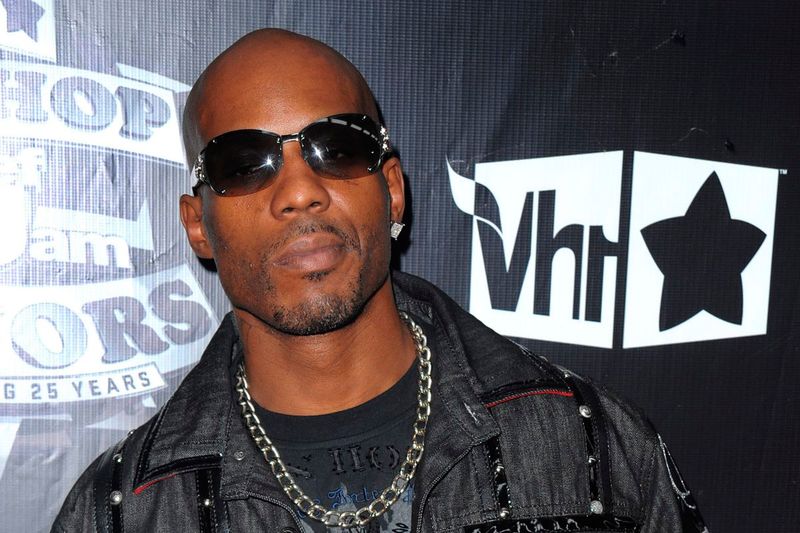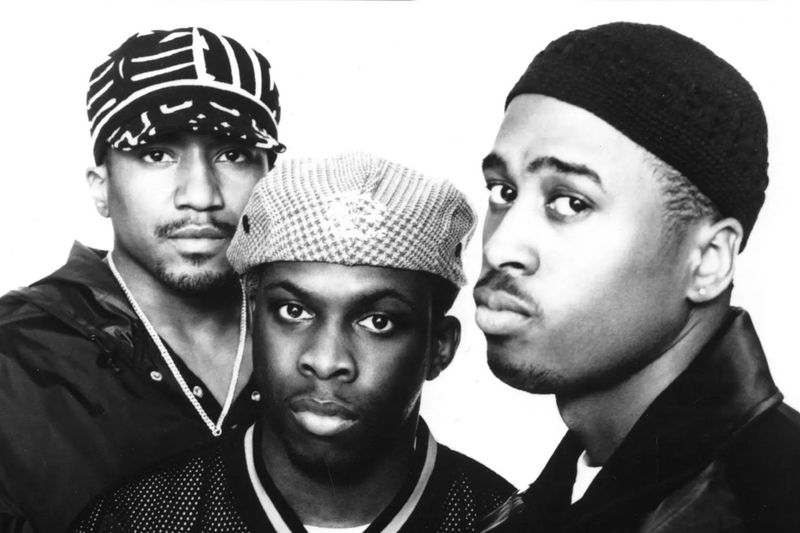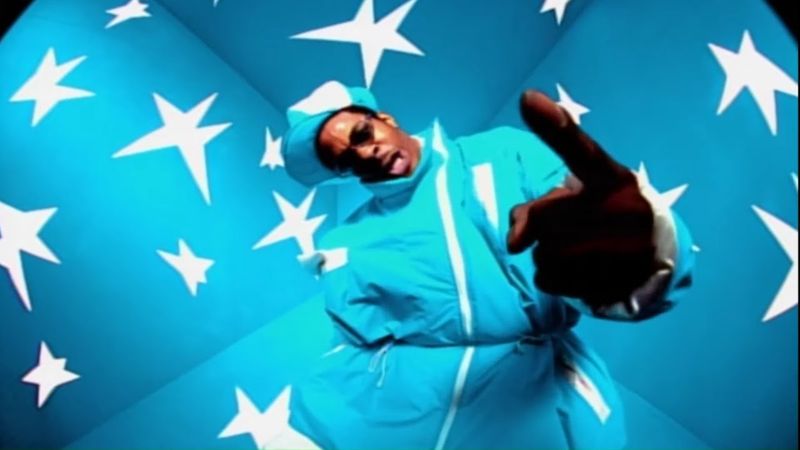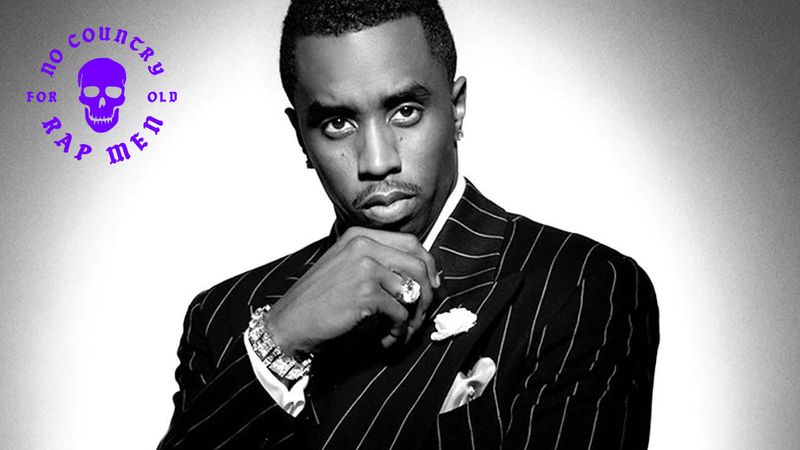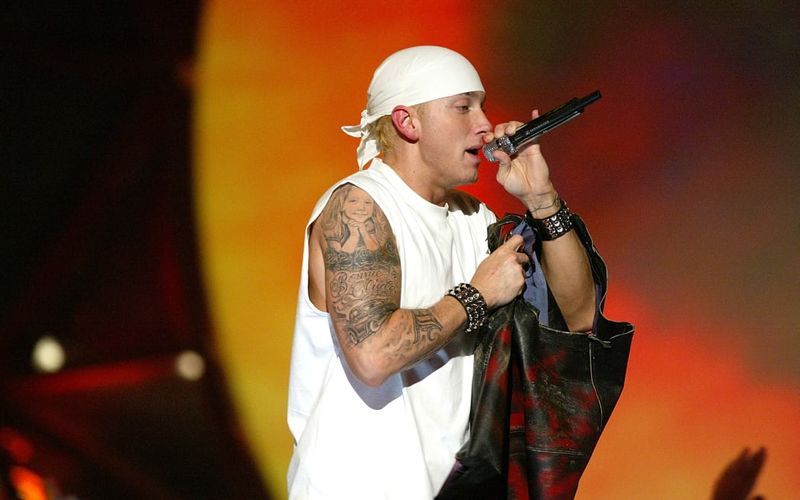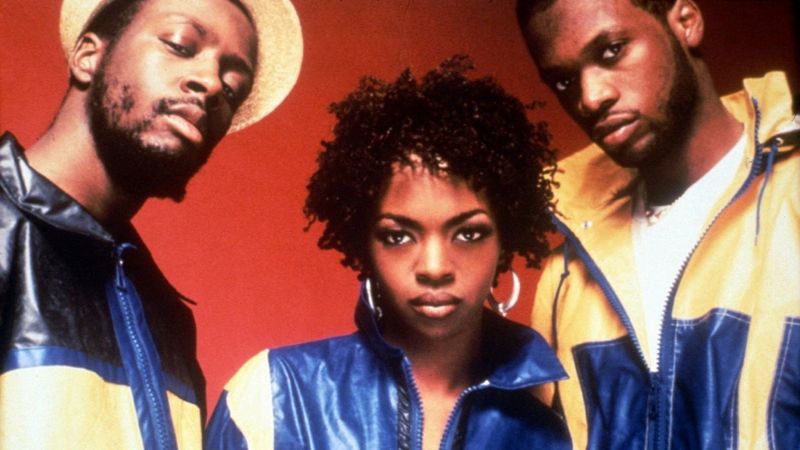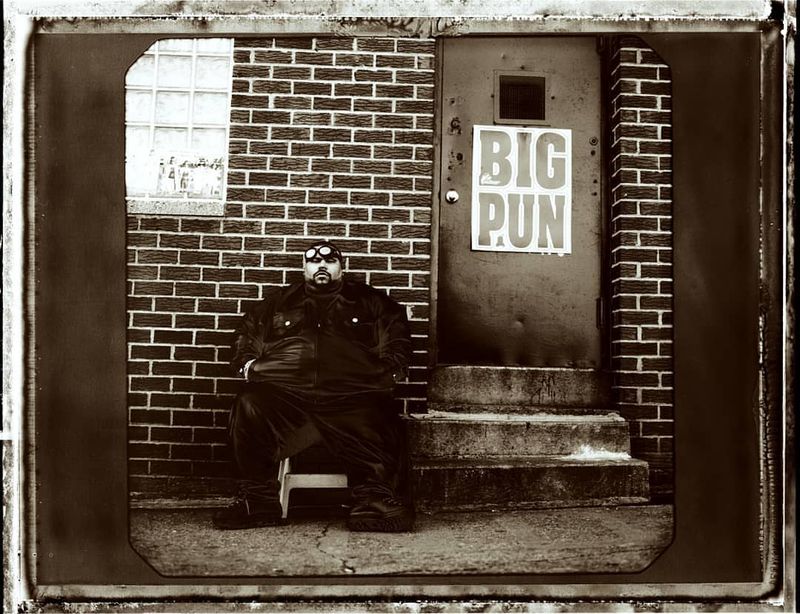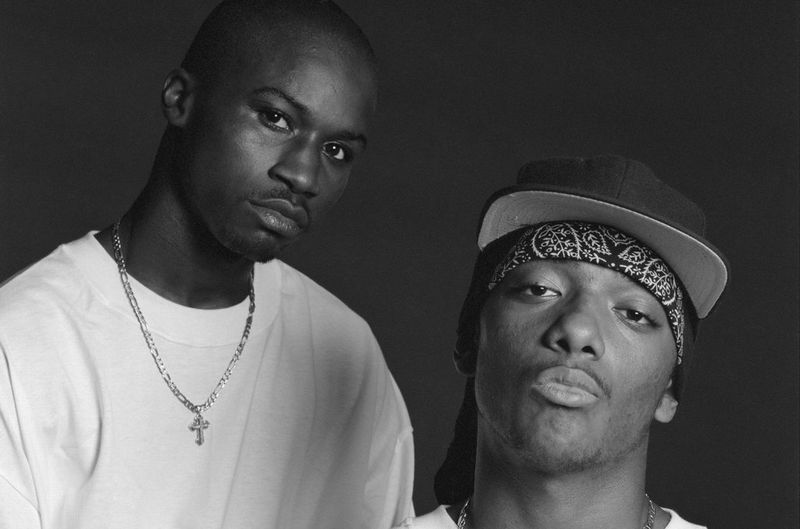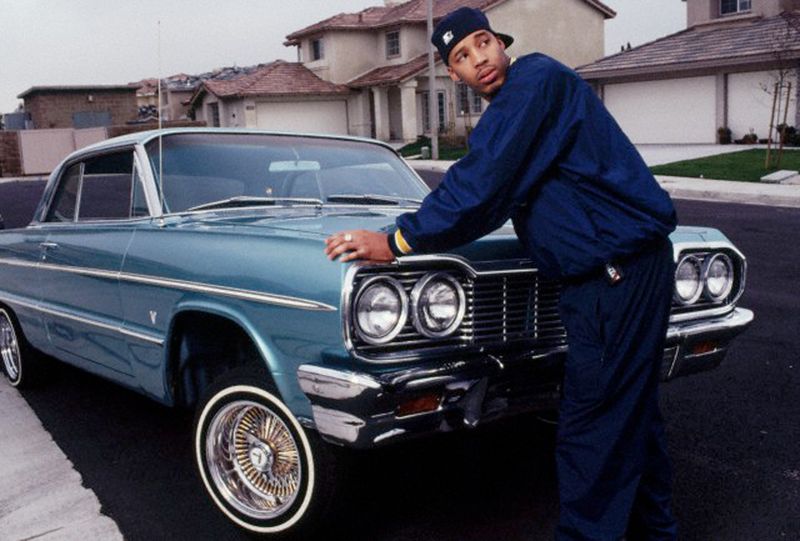The 1990s transformed hip-hop from underground phenomenon to global cultural force. During this golden decade, pioneering artists crafted groundbreaking sounds that still influence music today. These 20 legendary performers didn’t just top charts—they revolutionized American music with innovative production techniques, powerful storytelling, and cultural commentary that resonated far beyond their neighborhoods.
1. The Notorious B.I.G.: Brooklyn’s Storytelling King
Christopher Wallace emerged from Brooklyn’s Bedford-Stuyvesant neighborhood to become rap’s most gifted storyteller. His deep, melodic flow combined with vivid street narratives created an unmistakable style that felt both gritty and sophisticated.
The 1994 classic “Ready to Die” showcased Biggie’s rare ability to balance commercial appeal with raw authenticity. His masterful wordplay and cinematic verses painted pictures so vivid you could practically smell the Brooklyn streets.
Despite his career lasting just five years before his tragic 1997 murder, Biggie’s influence remains massive. His storytelling blueprint—combining street realism with wit and vulnerability—continues shaping hip-hop’s greatest lyricists today.
2. Tupac Shakur: Rap’s Revolutionary Poet
Tupac embodied hip-hop’s contradictions like no other artist—a revolutionary poet with thug life tattooed across his abdomen. His passionate delivery made every verse feel urgent and necessary, whether addressing police brutality or celebrating resilience.
Beyond music, Tupac’s acting career and political activism showcased his multidimensional talents. Albums like “All Eyez On Me” and “Me Against the World” balanced party anthems with profound social commentary that still resonates decades later.
His 1996 murder at age 25 only mythologized his legacy. Tupac’s fearless approach to addressing inequality, combined with his vulnerability discussing inner-city struggles, created a template for conscious rappers who followed in his footsteps.
3. Nas: Queens Bridge’s Lyrical Prodigy
When “Illmatic” dropped in 1994, hip-hop witnessed the arrival of a rare poetic genius. Nas crafted dense, literary verses that transformed Queensbridge housing projects into vivid urban landscapes where everyday struggles became profound philosophical reflections.
His surgical precision with words elevated rap lyricism to unprecedented heights. Each verse packed with complex internal rhymes, historical references, and street wisdom delivered in his distinctive raspy flow.
What separated Nas was his old-soul perspective—a teenage prophet somehow channeling wisdom beyond his years. His intellectual approach to gangsta rap themes created a blueprint for thoughtful MCs who valued substance and technical skill over simple hooks or trends.
4. Jay-Z: Brooklyn’s Business-Minded Wordsmith
Shawn Carter transformed from Marcy Projects hustler to hip-hop’s first billionaire through unmatched business acumen and lyrical prowess. His smooth flow and clever wordplay made classics like “Reasonable Doubt” feel like street corner philosophy sessions.
Unlike many peers, Jay-Z evolved constantly throughout the decade. He shifted from underground favorite to mainstream hitmaker without sacrificing his authenticity or sharp storytelling abilities.
His genius lay in making complex rhyme schemes sound effortless. Jay created a blueprint showing artists could maintain creative control while building empires beyond music. This dual mastery of art and commerce revolutionized how rappers approached their careers and business opportunities.
5. Lauryn Hill: The Soulful Revolutionary
Lauryn Hill shattered hip-hop’s glass ceiling with a masterpiece that transcended genres. “The Miseducation of Lauryn Hill” wasn’t just an album—it was a cultural revelation that blended rap’s rawness with soul’s emotional depth and reggae’s revolutionary spirit.
Her extraordinary talent encompassed everything: rapping with technical brilliance, singing with unmatched soul, producing innovative beats, and writing lyrics that explored love, spirituality and social justice. The unprecedented five Grammy wins in 1999 merely confirmed what listeners already knew.
Hill created space for complexity in hip-hop, showing artists could be simultaneously conscious, commercial, and creatively fearless. Her brief but spectacular reign forever altered expectations for what a hip-hop artist could accomplish.
6. Snoop Dogg: Long Beach’s Smooth Operator
Calvin Broadus Jr. introduced the world to G-Funk’s laid-back groove through his distinctive drawl and unflappable persona. His 1993 debut “Doggystyle” captured California’s sun-soaked vibe while delivering street narratives with surprising smoothness.
Snoop’s flow was revolutionary—languid yet precise, stretching syllables like taffy until words became musical instruments themselves. This instantly recognizable vocal style made him hip-hop’s most natural performer, seemingly gliding effortlessly over Dr. Dre’s funk-heavy productions.
Beyond music, Snoop pioneered hip-hop’s crossover into mainstream entertainment. His charismatic personality and entrepreneurial spirit paved the way for rappers to become household names and brand ambassadors, expanding hip-hop’s cultural footprint beyond music.
7. Wu-Tang Clan: Staten Island’s Kung Fu Philosophers
Nine distinct MCs from Staten Island created hip-hop’s most revolutionary collective. Wu-Tang blended gritty street narratives with martial arts philosophy, chess references, and Five-Percent Nation teachings into a completely original artistic vision.
RZA’s production genius transformed dusty soul samples into eerie, minimalist soundscapes that perfectly framed each member’s unique style. Method Man’s smoky charisma, Ghostface’s emotional intensity, and ODB’s unhinged energy created an ensemble greater than its already formidable parts.
Their business model proved equally revolutionary. By negotiating independent solo deals while maintaining the group identity, Wu-Tang created a blueprint for artistic freedom within commercial constraints. Their influence extends beyond music into fashion, slang, and entrepreneurship.
8. OutKast: Atlanta’s Funky Innovators
André 3000 and Big Boi crashed hip-hop’s coastal monopoly, proving Southern rap deserved equal respect. Their innovative production blended funk, gospel, and psychedelic rock with Atlanta’s distinctive bounce, creating an entirely new sonic palette.
What made OutKast revolutionary was their fearless creativity and refusal to be pigeonholed. Albums like “ATLiens” and “Aquemini” balanced street credibility with artistic experimentation, expanding hip-hop’s boundaries with each release.
Their contrasting personalities—André’s eccentric futurism complementing Big Boi’s grounded street wisdom—created perfect creative tension. OutKast’s success opened doors for countless Southern artists and proved commercial success didn’t require conformity to New York or LA styles.
9. Dr. Dre: Compton’s Production Mastermind
Andre Young revolutionized hip-hop production twice in one decade. First with N.W.A.’s raw street reportage, then by crafting G-Funk’s laid-back groove—a sound that defined California hip-hop for generations.
His 1992 masterpiece “The Chronic” wasn’t just an album but a complete sonic universe. Dre layered Parliament-Funkadelic samples with live instrumentation to create cinematic soundscapes that felt simultaneously nostalgic and futuristic.
Beyond his own work, Dre’s greatest legacy may be his eye for talent. Discovering and developing Snoop Dogg, Eminem, and 50 Cent demonstrated his unparalleled ability to identify and nurture unique voices. His perfectionist production approach set new standards for sonic quality in hip-hop.
10. Ice Cube: Compton’s Fearless Lyrical Activist
After leaving N.W.A., O’Shea Jackson forged a solo career that balanced revolutionary politics with street narratives. His debut “AmeriKKKa’s Most Wanted” established him as hip-hop’s most fearless social commentator, confronting racism with unfiltered rage and precision.
Cube’s genius lay in making political rap commercially viable without watering down his message. Tracks like “It Was A Good Day” showcased his storytelling versatility, finding poetry in everyday South Central experiences.
Few artists managed such a successful transition to Hollywood while maintaining musical credibility. Through albums, films, and business ventures, Cube created a template for hip-hop artists to control their narrative across multiple platforms, expanding the culture’s influence far beyond music.
11. Missy Elliott: Virginia’s Futuristic Visionary
Missy Misdemeanor Elliott crashed hip-hop’s boys’ club with a sound and visual aesthetic that felt beamed in from another dimension. Her 1997 debut “Supa Dupa Fly” introduced a fearlessly experimental artist who defied every convention about women in hip-hop.
Collaborating with producer Timbaland, Missy created sonic landscapes filled with unconventional samples, stuttering rhythms, and playful vocal manipulations. Her music videos, directed by Hype Williams, featured inflatable leather suits, fisheye lenses, and choreography that influenced visual art across genres.
As songwriter, rapper, singer, and producer, Missy controlled every aspect of her creative output. This comprehensive artistry opened doors for women to define themselves on their own terms rather than conforming to hip-hop’s limited female stereotypes.
12. DMX: Yonkers’ Raw Emotional Force
Earl Simmons exploded onto hip-hop’s landscape with a primal intensity unlike anything heard before. His trademark growls and barks punctuated verses delivered with such raw emotional power that his pain became palpable through speakers.
DMX’s 1998 one-two punch of “It’s Dark and Hell Is Hot” and “Flesh of My Flesh, Blood of My Blood” showcased an artist unafraid to explore his demons publicly. His vulnerability discussing spiritual struggles and mental health battles created space for emotional honesty in a genre often focused on invulnerability.
His theatrical concert performances felt like religious experiences—part exorcism, part sermon. X’s willingness to expose his flaws alongside his strength connected deeply with fans who saw their own struggles reflected in his unflinching self-examination.
13. A Tribe Called Quest: Queens’ Jazz-Infused Innovators
Q-Tip, Phife Dawg, Ali Shaheed Muhammad, and Jarobi White created hip-hop’s most sophisticated sonic palette by mining jazz records for samples others overlooked. Their low-end theory prioritized bass-heavy grooves while their lyrics balanced intellectual depth with playful humor.
Albums like “The Low End Theory” and “Midnight Marauders” showcased their unique chemistry—Q-Tip’s philosophical musings complemented perfectly by Phife’s streetwise punchlines. This creative tension produced songs that worked equally well in college dorm rooms and block parties.
Tribe’s greatest contribution was expanding hip-hop’s musical vocabulary beyond funk and soul samples. By incorporating jazz’s improvisational spirit and complex harmonies, they created a template for alternative hip-hop that valued musicality and thoughtful lyricism over commercial trends.
14. Busta Rhymes: Brooklyn’s Energetic Showman
Trevor Smith Jr. combined technical virtuosity with theatrical flair to create hip-hop’s most dynamic live performer. His rapid-fire delivery could accelerate from conversational to machine-gun speed within a single verse, displaying unmatched breath control and precision.
Busta’s visual presentation proved equally revolutionary. Colorful outfits, wild hairstyles, and his elastic facial expressions made his Hype Williams-directed videos essential viewing. “Woo Hah!! Got You All in Check” and “Put Your Hands Where My Eyes Could See” remain masterclasses in hip-hop visual storytelling.
Originally breaking through with Leaders of the New School, Busta’s solo career showcased his ability to balance commercial appeal with technical excellence. His apocalyptic themes and larger-than-life persona expanded hip-hop’s theatrical possibilities.
15. Puff Daddy: Harlem’s Flashy Empire Builder
Sean Combs transformed hip-hop’s business model through sheer force of ambition. As Bad Boy Records’ founder, he created a sound that merged street credibility with pop accessibility, making hip-hop America’s dominant musical force.
Puffy’s genius wasn’t primarily as a rapper but as a visionary who understood hip-hop’s mainstream potential. His glossy videos, sample-heavy production, and marketing savvy brought unprecedented wealth and visibility to the culture. The shiny suit era may have critics, but its commercial impact remains undeniable.
Beyond music, Diddy pioneered hip-hop’s expansion into fashion, liquor, and media. His entrepreneurial blueprint showed artists how to leverage musical fame into diverse business empires, forever changing how success is measured in hip-hop.
16. Eminem: Detroit’s Boundary-Breaking Wordsmith
Marshall Mathers crashed through hip-hop’s racial barriers with unmatched technical skill and controversial content. His 1999 major-label debut “The Slim Shady LP” introduced a complex artist who combined horrorcore themes with personal vulnerability and satirical humor.
Em’s rapid-fire delivery, intricate rhyme schemes, and endless vocabulary made him a technical marvel. His alter-ego Slim Shady allowed him to explore darker themes while his more introspective tracks revealed childhood trauma and struggles with fame.
Working with Dr. Dre, Eminem proved hip-hop transcended racial boundaries while respecting its cultural origins. His phenomenal commercial success—selling more albums than any rapper in history—brought countless new listeners to the genre while maintaining respect from hip-hop purists.
17. The Fugees: New Jersey’s Multicultural Innovators
Lauryn Hill, Wyclef Jean, and Pras Michel created a revolutionary sound blending hip-hop with Caribbean influences, soul samples, and socially conscious lyrics. Their 1996 masterpiece “The Score” sold over 22 million copies worldwide, bringing alternative hip-hop to unprecedented commercial heights.
The Fugees’ genius lay in their versatility and chemistry. Wyclef’s musical eclecticism, Pras’s steady presence, and Lauryn’s extraordinary dual talents as rapper and vocalist created a group where each member complemented the others perfectly.
Their multicultural background informed their global perspective. By incorporating Haitian musical elements and addressing international issues, The Fugees expanded hip-hop’s geographical and thematic boundaries. Their brief but spectacular run demonstrated hip-hop’s potential for cross-cultural expression.
18. Big Pun: Bronx’s Technical Virtuoso
Christopher Rios broke barriers as hip-hop’s first Latino solo artist to go platinum. His 1998 debut “Capital Punishment” showcased a technical mastery that left listeners rewinding verses repeatedly to catch every intricate rhyme scheme.
Despite his imposing physical presence, Pun moved through verses with ballerina-like grace. His breath control defied physics as he delivered rapid-fire multisyllabic rhymes without pausing. The legendary “Twinz (Deep Cover ’98)” verse remains a benchmark for technical excellence.
Beyond representing for Puerto Rican hip-hop fans, Pun elevated lyricism to new heights regardless of background. His tragic death at 28 cut short a promising career, but his influence lives on through technical rappers who study his precise delivery and complex wordplay.
19. Mobb Deep: Queensbridge’s Gritty Poets
Havoc and Prodigy translated Queensbridge housing projects’ harsh realities into hip-hop’s most atmospheric soundscapes. Their 1995 masterpiece “The Infamous” created a sonic template combining minimalist piano loops, dusty drums, and unflinchingly bleak street narratives.
Mobb Deep’s production style felt like winter in New York—cold, stark, and beautiful in its desolation. Havoc’s haunting beats provided the perfect backdrop for Prodigy’s detailed accounts of survival in America’s forgotten corners.
Their influence extends far beyond their commercial success. The duo’s uncompromising authenticity and atmospheric production influenced countless artists across genres. “Shook Ones Pt. II” remains hip-hop’s definitive statement on urban survival, its opening piano notes instantly recognizable to fans worldwide.
20. Warren G: Long Beach’s Smooth Navigator
Warren Griffin III created G-funk’s most accessible incarnation with his laid-back flow and melodic production style. His 1994 breakthrough “Regulate…G Funk Era” perfectly balanced gangsta rap’s street narratives with smooth R&B sensibilities.
Unlike his more aggressive contemporaries, Warren’s approach emphasized musicality and groove. The title track “Regulate” with Nate Dogg became hip-hop’s perfect summer anthem—a storytelling masterpiece that crossed over without compromising its West Coast identity.
As Dr. Dre’s stepbrother and Snoop’s childhood friend, Warren completed the Long Beach triumvirate that defined California hip-hop. His production work incorporated sophisticated jazz and funk elements, expanding G-funk beyond heavy synths into more nuanced musical territory.
